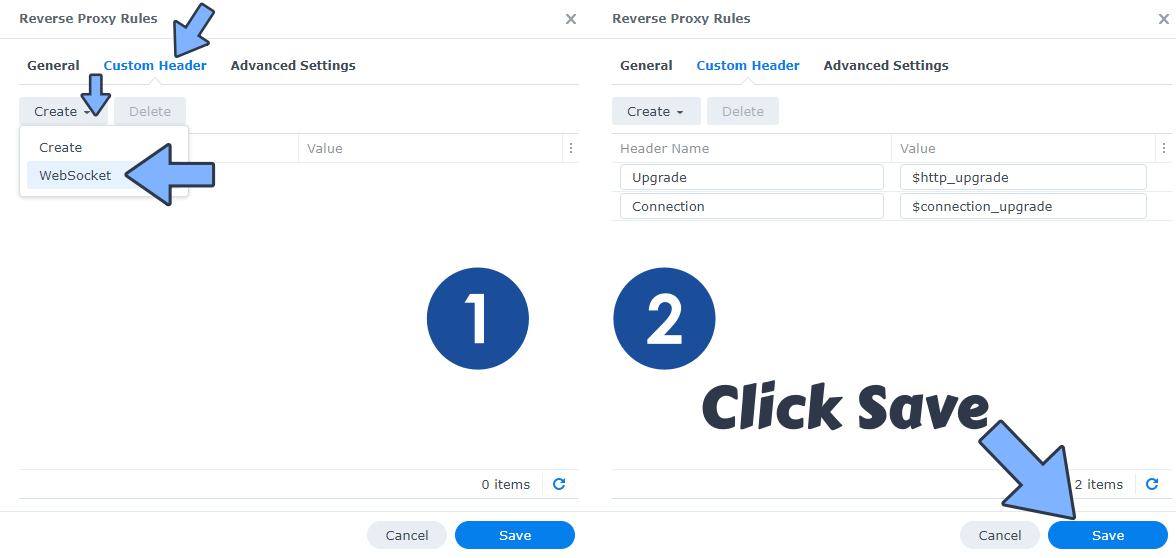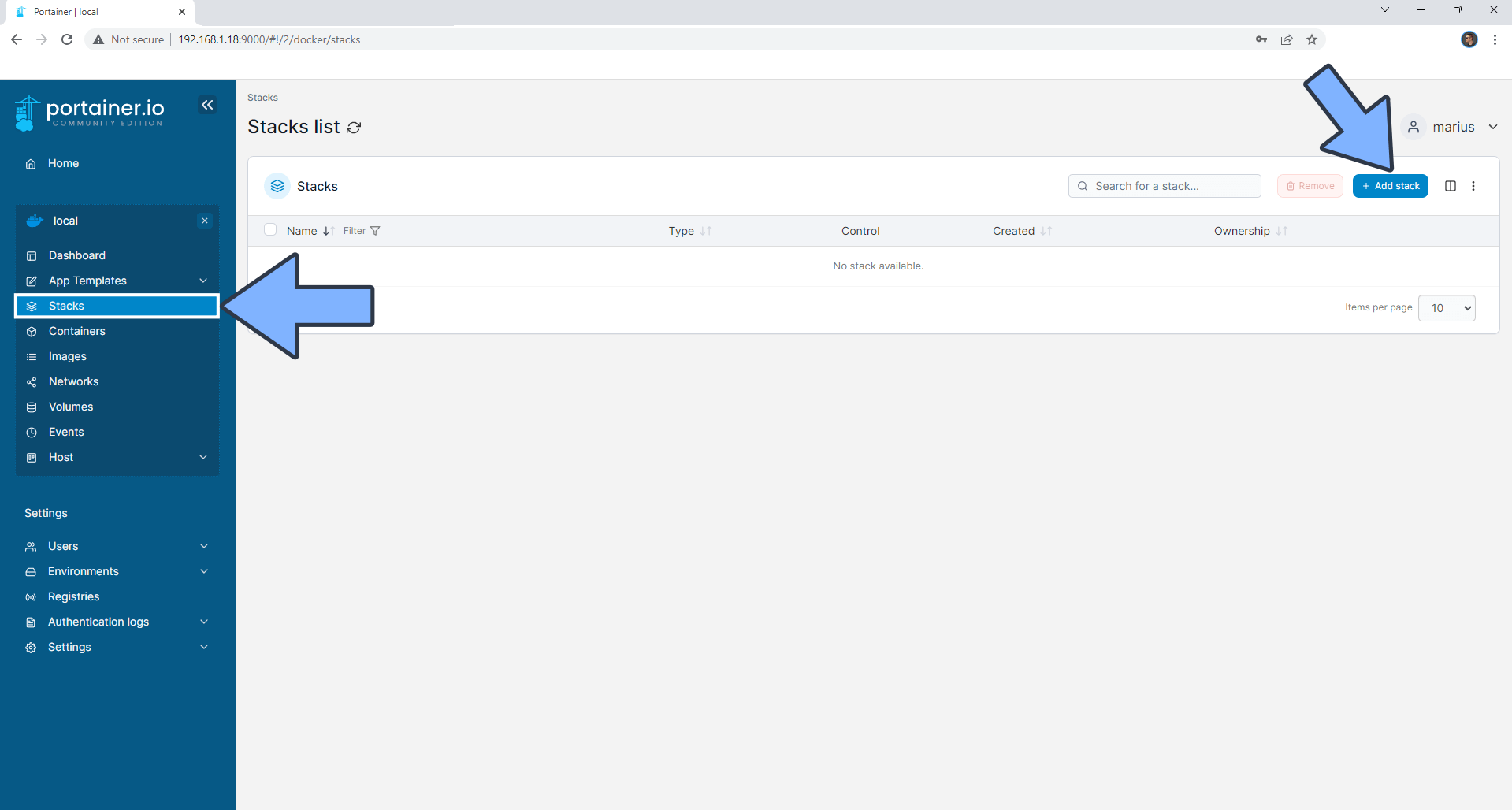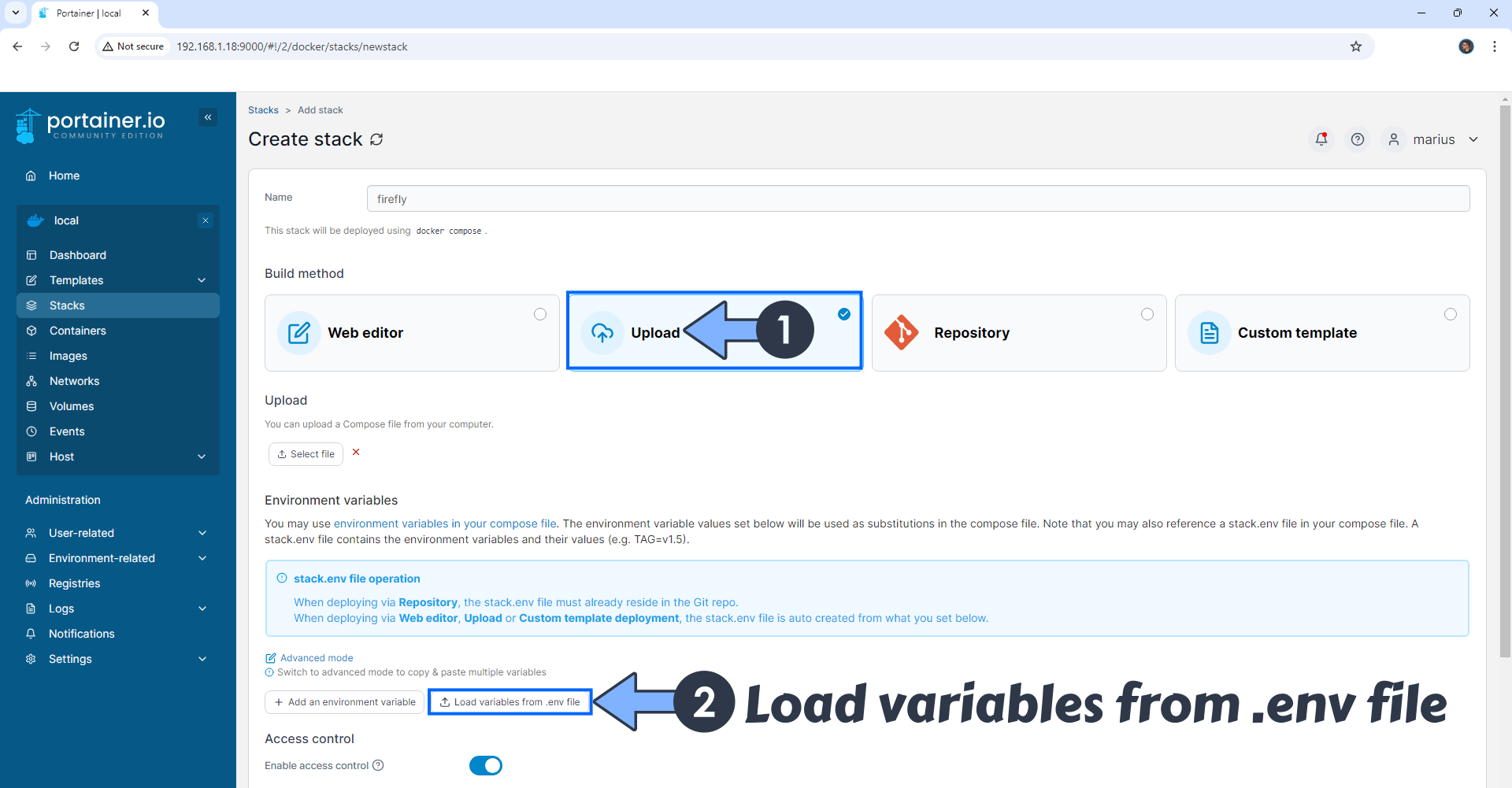![]()
Pixelfed is a free and open-source image sharing social network service. It is decentralized, therefore user data is not stored on a central server, unlike other platforms. The fediverse is a large network of platforms that all speak a common language. Imagine if you could reply to Instagram posts from Twitter, or interact with your favorite Medium blogs from Facebook – federated alternatives like Pixelfed, Mastodon and WriteFreely enable you to do these types of things. In this step by step guide I will show you how to install Pixelfed on your Synology NAS using Docker & Portainer.
This guide works perfectly with the latest Pixelfed v0.12.5 release.
STEP 1
Please Support My work by Making a Donation.
STEP 2
Install Portainer using my step by step guide. If you already have Portainer installed on your Synology NAS, skip this STEP. Attention: Make sure you have installed the latest Portainer version.
STEP 3
Make sure you have a synology.me Wildcard Certificate. Follow my guide to get a Wildcard Certificate. If you already have a synology.me Wildcard certificate, skip this STEP.
STEP 4
Go to Control Panel / Login Portal / Advanced Tab / click Reverse Proxy. Follow the instructions in the image below.
![]()
STEP 5
Now click the “Create” button. Follow the instructions in the image below.
![]()
STEP 6
After you click the Create button, the window below will open. Follow the instructions in the image below.
On the General area, set the Reverse Proxy Name description: type in Pixelfed. After that, add the following instructions:
Source:
Protocol: HTTPS
Hostname: pixelfed.yourname.synology.me
Port: 443
Check Enable HSTS
Destination:
Protocol: HTTP
Hostname: localhost
Port: 9750
![]()
STEP 7
On the Reverse Proxy Rules click the Custom Header tab. Click Create and then, from the drop-down menu, click WebSocket. After you click on WebSocket, two Header Names and two Values will be automatically added. Click Save. Follow the instructions in the image below.

STEP 8
Go to Control Panel / Network / Connectivity tab/ Check Enable HTTP/2 then click Apply. Follow the instructions in the image below.
![]()
STEP 9
Go to Control Panel / Security / Advanced tab/ Check Enable HTTP Compression then click Apply. Follow the instructions in the image below.
![]()
STEP 10
Go to File Station and open the docker folder. Inside the docker folder, create one new folder and name it pixelfed. Follow the instructions in the image below.
Note: Be careful to enter only lowercase, not uppercase letters.
![]()
STEP 11
Now create three new folders inside the pixelfed folder that you created at STEP 10 and name them db, redis, storage. Follow the instructions in the image below.
Note: Be careful to enter only lowercase, not uppercase letters.
![]()
STEP 12
Right click on the storage folder that you have previously created at STEP 11 then click Properties. Follow the instructions in the image below.
![]()
STEP 13
Go to the Permission tab then click Advanced options. From the drop-down menu choose “Make inherited permissions explicit“. Follow the instructions in the image below.
![]()
STEP 14
Select Everyone then click the Edit tab. Follow the instructions in the image below.
![]()
STEP 15
Check all Read and Write Permissions. Click Done. Follow the instructions in the image below.
![]()
STEP 16
After you click Done on STEP 15, check “Apply to this folder, sub-folders and files“. Click Save. Follow the instructions in the image below.
![]()
STEP 17
Log into Portainer using your username and password. On the left sidebar in Portainer, click on Stacks then + Add stack. Follow the instructions in the image below.

STEP 18
In the Name field type in pixelfed. Follow the instructions in the image below.
services:
pixelfed-redis:
image: redis
container_name: Pixelfed-REDIS
hostname: pixelfed-redis
security_opt:
- no-new-privileges:true
healthcheck:
test: ["CMD-SHELL", "redis-cli ping || exit 1"]
user: 1026:100
environment:
- TZ=Europe/Bucharest
volumes:
- /volume1/docker/pixelfed/redis:/data:rw
restart: on-failure:5
pixelfed-db:
image: postgres:16
container_name: Pixelfed-DB
hostname: pixelfed-db
security_opt:
- no-new-privileges:true
healthcheck:
test: ["CMD", "pg_isready", "-q", "-d", "pixelfeddb", "-U", "pixelfeduser"]
timeout: 45s
interval: 10s
retries: 10
env_file:
- stack.env
environment:
- TZ=Europe/Bucharest
volumes:
- /volume1/docker/pixelfed/db:/var/lib/postgresql/data:rw
restart: on-failure:5
pixelfed-web:
image: quay.io/zknt/pixelfed:latest
container_name: Pixelfed-WEB
hostname: pixelfed-web
security_opt:
- no-new-privileges:true
healthcheck:
test: stat /etc/passwd || exit 1
env_file:
- stack.env
volumes:
- /volume1/docker/pixelfed/storage:/var/www/storage:rw
- app-bootstrap:/var/www/bootstrap
ports:
- 9750:80
restart: on-failure:5
depends_on:
pixelfed-db:
condition: service_started
pixelfed-redis:
condition: service_healthy
pixelfed-worker:
image: quay.io/zknt/pixelfed:latest
container_name: Pixelfed-WORKER
hostname: pixelfed-worker
security_opt:
- no-new-privileges:true
healthcheck:
test: php artisan horizon:status | grep running
interval: 60s
timeout: 5s
retries: 1
env_file:
- stack.env
volumes:
- /volume1/docker/pixelfed/storage:/var/www/storage:rw
- app-bootstrap:/var/www/bootstrap
restart: on-failure:5
entrypoint: /worker-entrypoint.sh
depends_on:
pixelfed-db:
condition: service_started
pixelfed-redis:
condition: service_healthy
pixelfed-web:
condition: service_healthy
volumes:
app-bootstrap:
Note: Before you paste the code above in the Web editor area below, change the value numbers for user with your own UID and GID values. (Follow my step by step guide on how to do this.) 1026 is my personal UID value and 100 is my personal GID value. You have to type in your own values.
Note: Before you paste the code above in the Web editor area below, change the value for TZ. (Select your current Time Zone from this list.)
![]()
STEP 19
Click the Upload button after Web editor. Download the stack.env file by clicking the blue link below and then upload it from your computer in the “Load variables from .env files“. Follow the instructions in the image below. 🔒Note: Support my work to unlock the password. You can use this password to download any file on mariushosting forever!

STEP 20
Note: On the Environment variables change the value for APP_KEY. (Generate your own free base64 APP KEY.)
Note: On the Environment variables change the value for APP_TIMEZONE and add your own TIMEZONE. (Select your current Time Zone from this list.)
Note: On the Environment variables change the value for APP_URL. Type in your own synology.me DDNS that you have previously created at STEP 6 with https at the beginning.
Note: On the Environment variables change the value for APP_DOMAIN. Type in your own synology.me DDNS that you have previously created at STEP 6 without https at the beginning.
Note: On the Environment variables change the value for ADMIN_DOMAIN. Type in your own synology.me DDNS that you have previously created at STEP 6 without https at the beginning.
Note: On the Environment variables change the value for SESSION_DOMAIN. Type in your own synology.me DDNS that you have previously created at STEP 6 without https at the beginning.
Warning: Do not change any of the other values.
![]()
STEP 21
After you make the changes, click the Web editor button. Follow the instructions in the image below.
![]()
STEP 22
Scroll down on the page until you see a button named Deploy the stack. Click on it. Follow the instructions in the image below. The installation process can take up to a few minutes. It will depend on your Internet speed connection.
![]()
STEP 23
If everything goes right, you will see the following message at the top right of your screen: “Success Stack successfully deployed“.
![]()
STEP 24
Go back to STEP 1 or you will deal with karma 🙂.
STEP 25
Now open your browser and type in your HTTPS/SSL certificate like this https://pixelfed.yourname.synology.me In my case it’s https://pixelfed.mariushosting.synology.me If everything goes right, you will see the Pixelfed Login page. Click Sign up. Follow the instructions in the image below.
![]()
STEP 26
Type in your own Name, Username and Password. Confirm your Password then click Register. Follow the instructions in the image below.
![]()
STEP 27
Your main Pixelfed page will look like this.
![]()
STEP 28
Give Administrator rights to the username you have previously created at STEP 26. On the left sidebar in Portainer, click Containers. Identify your Pixelfed-WEB instance, then click on the little terminal icon. Follow the instructions in the image below.
![]()
STEP 29
After you click on the little terminal icon at STEP 28, a new page will open. Click Connect. Follow the instructions in the image below.
![]()
STEP 30
After you click Connect at STEP 29, a Console will open. Copy paste the code below and confirm by pressing Enter on your keyboard to start the admin rights process. Follow the instructions in the image below.
php artisan user:admin mariushostingNote: Before you type in the code, remember to change the username with the one that you have previously chosen at STEP 26. Follow the instructions in the image below.
![]()
STEP 31
After you press Enter on your Keyboard at STEP 30, you will get a message that says: “Add admin privileges to this user?” Type in yes and confirm by pressing Enter on your keyboard. Follow the instructions in the image below.
![]()
STEP 32
After a few seconds you will get a message in the terminal that says: “Successfully changed permissions!“. Go straight to STEP 33.
![]()
STEP 33
On the left sidebar in Portainer, click Containers. Identify your Pixelfed-WEB instance, select it then click Restart. Follow the instructions in the image below.
![]()
STEP 34
Go back to STEP 1 or you will deal with karma 🙂.
STEP 35
Now open your browser and type in your HTTPS/SSL certificate like this https://pixelfed.yourname.synology.me In my case it’s https://pixelfed.mariushosting.synology.me If everything goes right, you will see the Pixelfed Login page. Click Login. Follow the instructions in the images below.
![]()
Type in your own Email and Password that you have previously created at STEP 26, then click Login. Follow the instructions in the image below.
![]()
STEP 36
At the top right of the page, under user profile, click Admin Dashboard. Follow the instructions in the image below.
![]()
STEP 37
Type in your own Password that you have previously created at STEP 26, then click Confirm Password. Follow the instructions in the image below.
![]()
STEP 38
On the left sidebar, click Diagnostics. As you can see, the instance actor cache is set to false. Follow the next step to fix it.
![]()
STEP 39
Open a new browser page, then type in your own synology.me DDNS followed by /i/actor
https://pixelfed.yourname.synology.me/i/actor![]()
STEP 40
Refresh the Diagnostics page. As you can see, the instance actor cache is set to true.
![]()
STEP 41
Your Admin Dashboard at a Glance! For extra admin Settings, follow STEP 42 further down. Follow the instructions in the image below.
![]()
STEP 42
In the Pixelfed dashboard under your profile on the right click UI Settings. Follow the instructions in the image below.
![]()
STEP 43
Select Dark Mode theme to switch to dark mode. Follow the instructions in the image below.
![]()
STEP 44
Your Dark Mode theme will look like this.
![]()
STEP 44
If you want to add more extra Admin Settings, go to Portainer then click Stacks. Click on pixelfed. Follow the instructions in the image below.
![]()
STEP 45
Click on the Editor tab then scroll down the page a little bit. Follow the instructions in the image below.
![]()
STEP 46
Change the values for ENABLE_CONFIG_CACHE and CUSTOM_EMOJI from false to true then scroll down the page until you find the Update the stack button. Follow the instructions in the image below.
![]()
STEP 47
Click Update the stack. Follow the instructions in the image below.
![]()
STEP 48
After you click Update the stack at STEP 47, a new pop up window will open. Click Update. Follow the instructions in the image below.
![]()
STEP 49
Restart all four containers.
Note: Read the full Pixelfed documentation.
Enjoy Pixelfed!
If you encounter issues by using this container, make sure to check out the Common Docker issues article.
Note: Can I run Docker on my Synology NAS? See the supported models.
Note: How to Back Up Docker Containers on your Synology NAS.
Note: Find out how to update the Pixelfed container with the latest image.
Note: How to Free Disk Space on Your NAS if You Run Docker.
Note: How to Schedule Start & Stop For Docker Containers.
Note: How to Activate Email Notifications.
Note: How to Add Access Control Profile on Your NAS.
Note: How to Change Docker Containers Restart Policy.
Note: How to Use Docker Containers With VPN.
Note: Convert Docker Run Into Docker Compose.
Note: How to Clean Docker.
Note: How to Clean Docker Automatically.
Note: Best Practices When Using Docker and DDNS.
Note: Some Docker Containers Need WebSocket.
Note: Find out the Best NAS Models For Docker.
Note: Activate Gmail SMTP For Docker Containers.
This post was updated on Saturday / April 5th, 2025 at 5:06 PM
